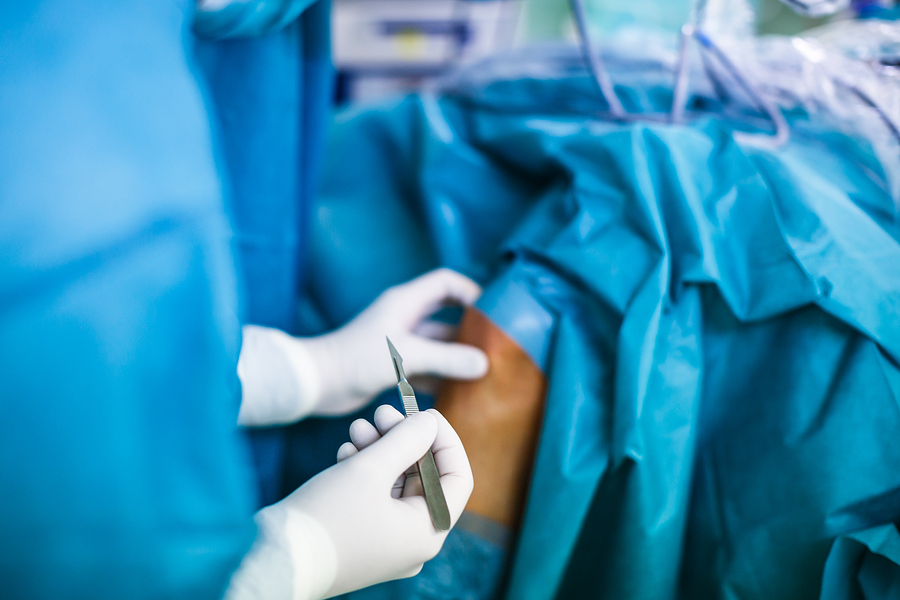Orthopedic care is primarily concerned with health conditions that affect the bones and the muscles within the human body. Orthopedic surgery is often required to fix these problems. However, there are also a wide range of effective non-surgical approaches for improving the quality of life of the patient.
An orthopedic surgeon will develop their own approach to dealing with certain medical problems throughout their career. They will also strive to stay up to date with all of the latest technological developments within their field of healthcare in order to maximise their treatment success rates.
Although an orthopedic specialist can never predict what kind of healthcare issues they are going to encounter in their day to day, the following conditions are some of the most commonly experienced by patients.
Total Joint Replacement
When a patient is diagnosed with severe arthritis, they will often have the option of undergoing total joint replacement. During this type of surgery, damaged parts of an arthritic joint will be removed and then replaced with a prosthesis.
A prosthesis will either be metal, plastic or ceramic, and is created to replicate a healthy joint. This surgery is performed approximately 1 million times every year in the United States. The hip and the knee are the most commonly affected areas that require total joint replacement surgery. However, the ankles, shoulders, elbows and wrists are also operated on regularly.
Arthritis is not the only reason that a patient might be referred for total joint replacement surgery. Any patient with a condition or disability that restricts the movement in the joints or causes pain could find some relief through this treatment.
Spine Surgery
Spine surgery sounds extreme but it is not as dramatic as it may initially sound. Undergoing spinal surgery can greatly reduce back pain, among other debilitating conditions.
Those who suffer from persistent back pain can have a largely reduced quality of life. This is not only due to the constant pain that they experience, but also because of the side effects of the pain relief medication that they may depend on. The decision to have surgery will usually result in a reduction in the pain, as well as an increase in the level of physical activity and all-round fitness that the patient is then able to enjoy.
Spine surgery actually refers to several associated surgeries, the most common of which is spinal fusion surgery. This is where certain vertebrae are joined together with the intention of restricting movement between individual spinal bones. This in turn limits the stretching of the nerves which can help with pain relief.
Carpal Tunnel Release
Sufferers of carpal tunnel syndrome (CTS) can find relief through carpal tunnel surgery, also known as carpal tunnel release.
During this surgery the transverse carpal ligament is cut, thereby relieving pressure on the median nerve. This in turn alleviates the symptoms of CTS. This can be done in a fairly short amount of time with an incision at the bottom of the palm of the hand. After the hand is stitched up, scar tissue will begin to grow in the area where the ligament was cut.
This is often performed as an outpatient procedure and there is generally no need to spend an extended amount of time in the hospital afterwards. It is advisable that the hand is not over-used for several months after surgery in order to improve the outcome.
Carpal tunnel release will usually only be considered after non-surgical treatments have failed to provide adequate relief.
Knee Replacement
Patients who have suffered with some form of destruction to the knee joint will often undergo knee replacement surgery. They may be struggling with severe pain and impaired movement prior to the surgery. It is expected that a knee replacement will alleviate both of these symptoms.
In the United States osteoarthritis is the most common reason that patients undergo knee replacement surgery. Trauma and progressive diseases are also reasons why a person may be experiencing pain or loss of function in this part of their body.
During the surgery, the knee joint will be replaced with a prosthesis. The end of the femur bone is generally removed too and replaced with artificial material. Additionally, the end of the tibia will be removed and replaced.
Following the surgery, the patient will be expected to follow up with a course of physical therapy to help with rehabilitation. As with any kind of surgery, there are of course associated risks, such as blood clots and anaesthesia damage to the organs.
Common Orthopedic Surgeries
These are just a few of the most common surgical procedures that an orthopedic surgeon will encounter during their career.
Success rates vary across the board and are often measured in various different ways. However, these surgeries generally have a high level of positive outcomes. Once a patient has undergone any of these surgeries, it is generally expected that their quality of life, physical fitness and mental health will improve. This can be attributed to a loss of pain, regaining function and being able to be more independent thanks to increased movement.
Although the success rates of orthopedic procedures are generally high, it is of course preferable to avoid surgery when possible. Keeping the body healthy and happy through a good diet and a varied exercise regime is a great way to approach life.
If you do begin to feel as though you are developing an orthopedic condition, then seeking a diagnosis early can help you to get achieve an optimum recovery.
References
Related Posts
Cigarettes May Inhibit Inflammation Treatments
Axial spondyloarthritis, also known as AxSpa, is a chronic…









